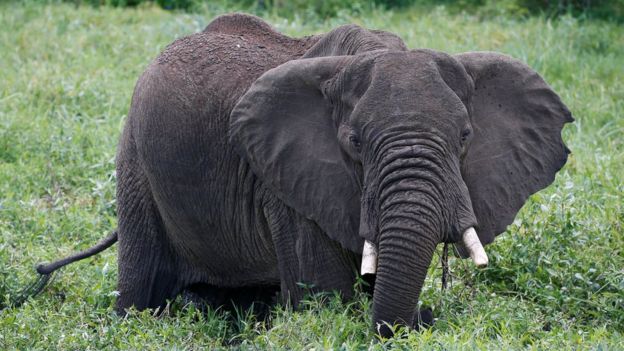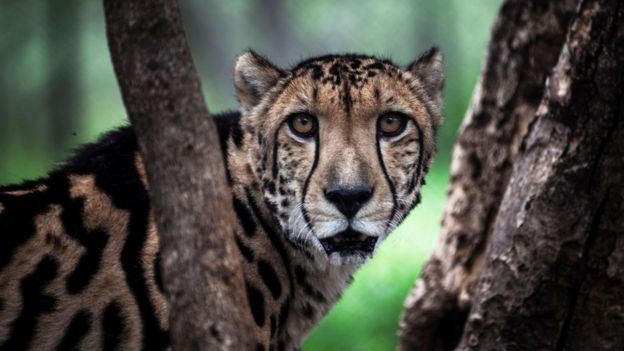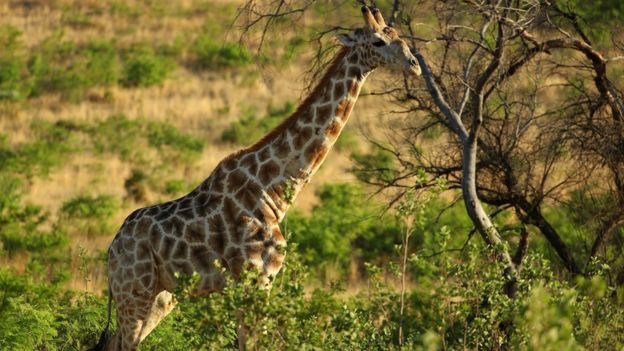Animals' popularity 'a disadvantage'
Science and Environment


The world's most popular animals are in more danger than we realise, according to a new study.
A survey of the public's perceptions suggests many people are unaware that the animals they consider "charismatic" are under threat in the wild.
These include lions, elephants, tigers and other animals which frequently appear in branding and advertising.
Researchers suspect the animals' media ubiquity may lead people to think they are prospering in the wild.
The findings were published by an international team of scientists in PLOS Biology.

Charismatic species
The notion of "charismatic" species has cropped up recently in conservation biology, explains Dr Franck Courchamp, the study's lead author.
"There is a regular claim that the most charismatic species are diverting most of the time and resources [in conservation]. I started wondering whether this was true and followed by better results in conservation," he told BBC News.
Dr Courchamp and his team set out to determine exactly which species these might be.

Using an online survey available in four languages, supplemented by classroom questionnaires in English, Spanish and French primary schools, researchers asked the public to name the wild species they considered most charismatic.
They also looked at how frequently animals were represented on zoo websites, and on the covers of Disney and Pixar animated films.
The ten most "charismatic" animals:
- Tiger
- Lion
- Elephant
- Giraffe
- Leopard
- Panda
- Cheetah
- Polar bear
- Wolf
- Gorilla
Virtual wildlife
Additionally, the team had volunteers in France catalogue their encounters with "virtual" populations of the 10 animals over the period of a week.
They encountered an average of 4.4 lions in logos, cartoons, magazines and other sources each day, implying that people are likely to see two to three times as many "virtual" lions in a year as there are lions in West Africa.
Dr Courchamp thinks this may have a subconscious impact, though there is no direct evidence as of yet.
"Mostly I think because people see giraffes and lions every day of their life, they unconsciously think they are in abundance," he said.
Despite their abundant media representation, nine of the animals on the list are classed as vulnerable, endangered or critically endangered on the International Union for the Conservation of Nature (IUCN) Red List.
 When researchers asked survey participants whether they thought these animals were endangered, explaining that they were not using IUCN terminology, they were surprised by the results.
When researchers asked survey participants whether they thought these animals were endangered, explaining that they were not using IUCN terminology, they were surprised by the results.
Almost half of respondents thought that critically endangered gorillas were not under threat.
But conservation biologist Dr Sarah Durant cautions that this doesn't yet establish "a causal relationship between seeing the species frequently in society and whether that relates to our bias perception of their endangerment."
Other factors may influence people's understanding of a species' status, and their participation in conservation efforts.
"We don't know that much about the psychology behind conservation. It's a very new field. I think a lot of people often feel overwhelmed as well, because the problems are so huge," added the Zoological Society of London researcher, who was not involved in the study.
"It would be an interesting area for further research," she said.

Dr Courchamp proposes an innovative solution; funding conservation by "copyrighting" the image of vulnerable or endangered species.
Companies would donate money to NGOs in return for using the animals in their branding or advertising.
"I think it's not so unrealistic," says Dr Courchamp.
"There are already some companies that do that. Jaguar are in partnership with Panthera.
"Lacoste... also made a campaign recently where they replaced their logo with silhouettes of endangered species."
Dr Durant observes that it would likely be difficult to execute, but is an interesting suggestion.
"This is just the first step," she commented, "putting this idea out there. Hopefully it will open a discussion about the use of these species and how it relates to their conservation."

Time is certainly short for some of the animals on the list. Ecologists predict that, without sustained conservation efforts, elephants will become extinct in the wild within a century.
Cheetah are facing an imminent population decline of up to 70%, and are already confined to just 9% of their historical territory in Africa.
Dr Courchamp feels that more needs to be done. "At the moment we are doing first aid on species that are on the verge of dying. We are just pushing the day they go extinct in the wild, we are not saving them."
Source : http://www.bbc.com/news/science-environment-43742646



Post Comment
No comments